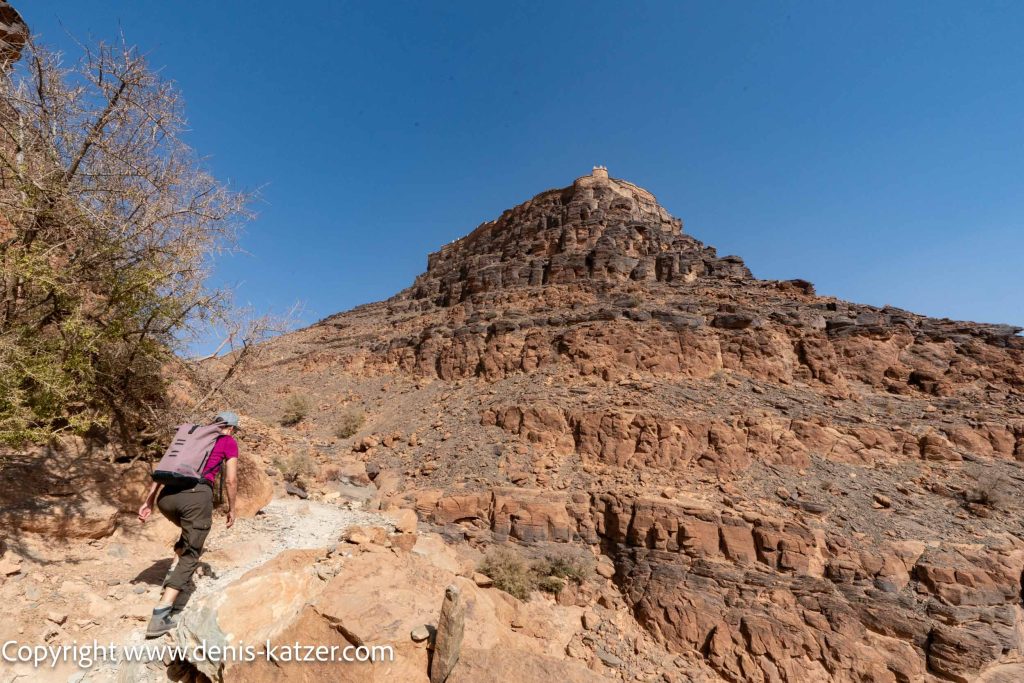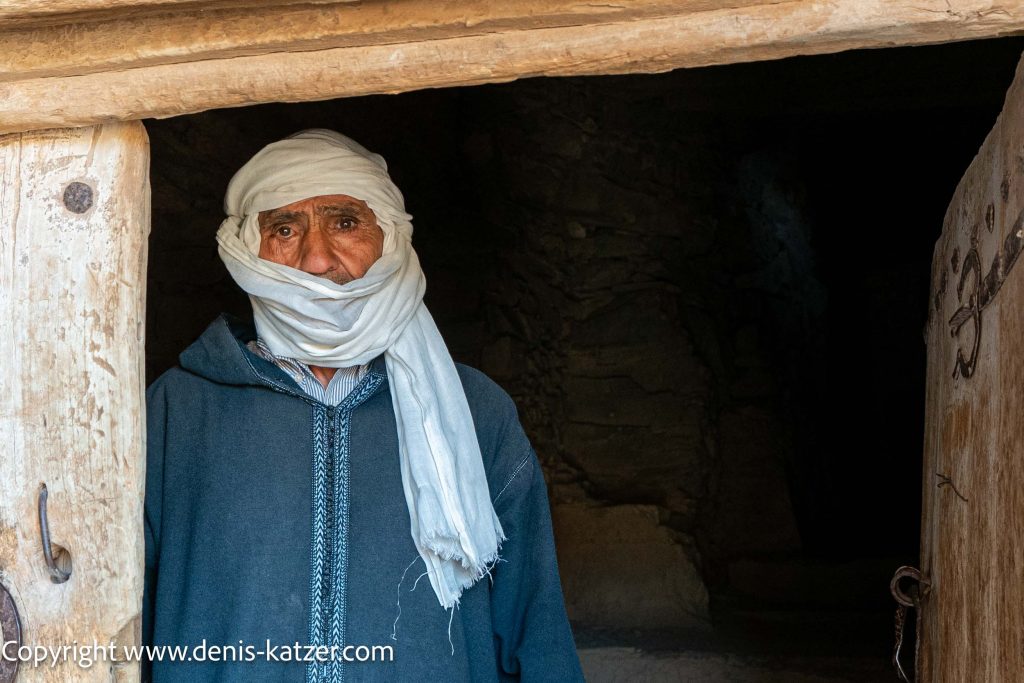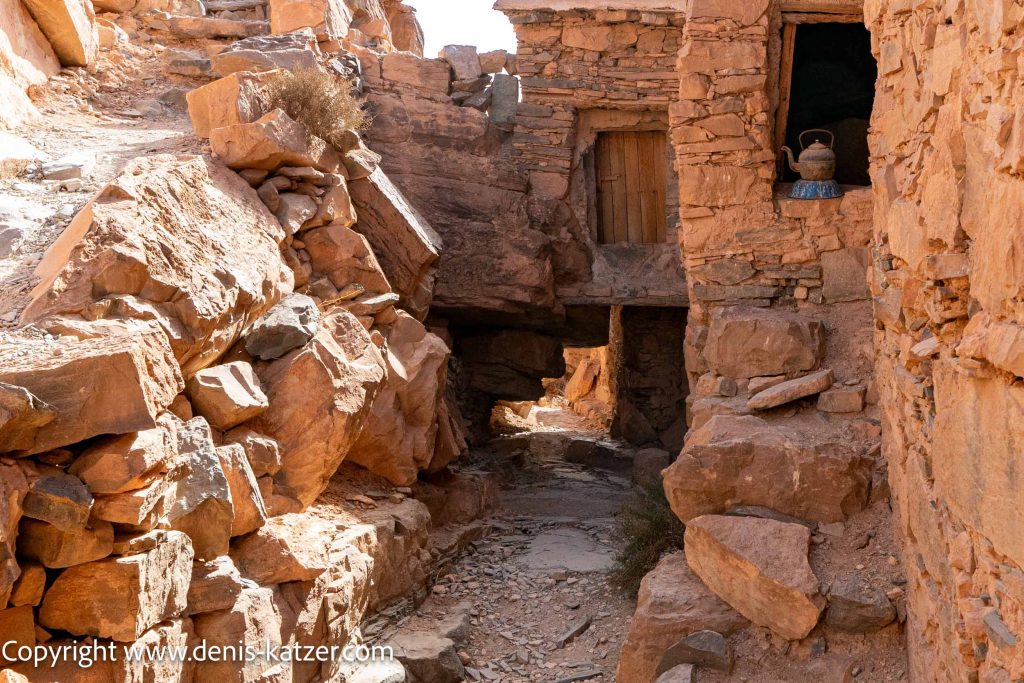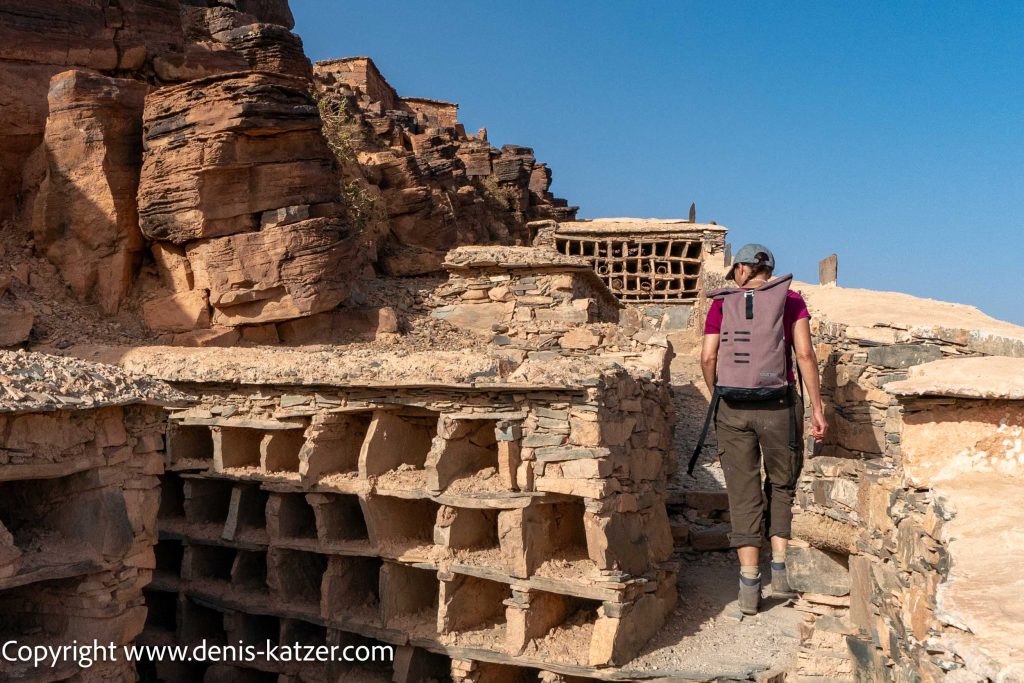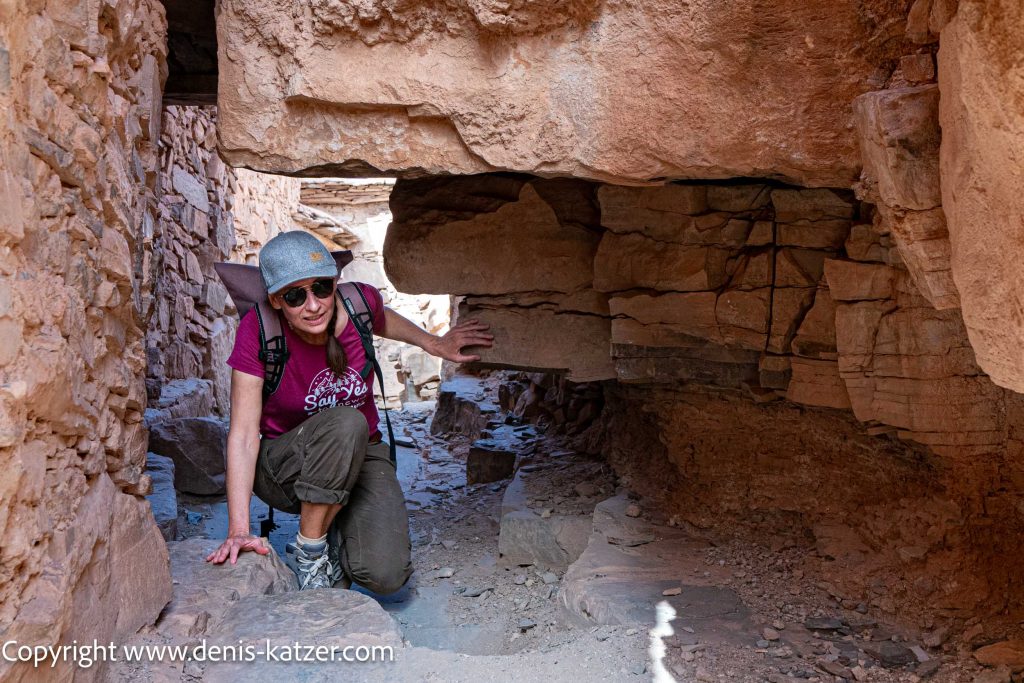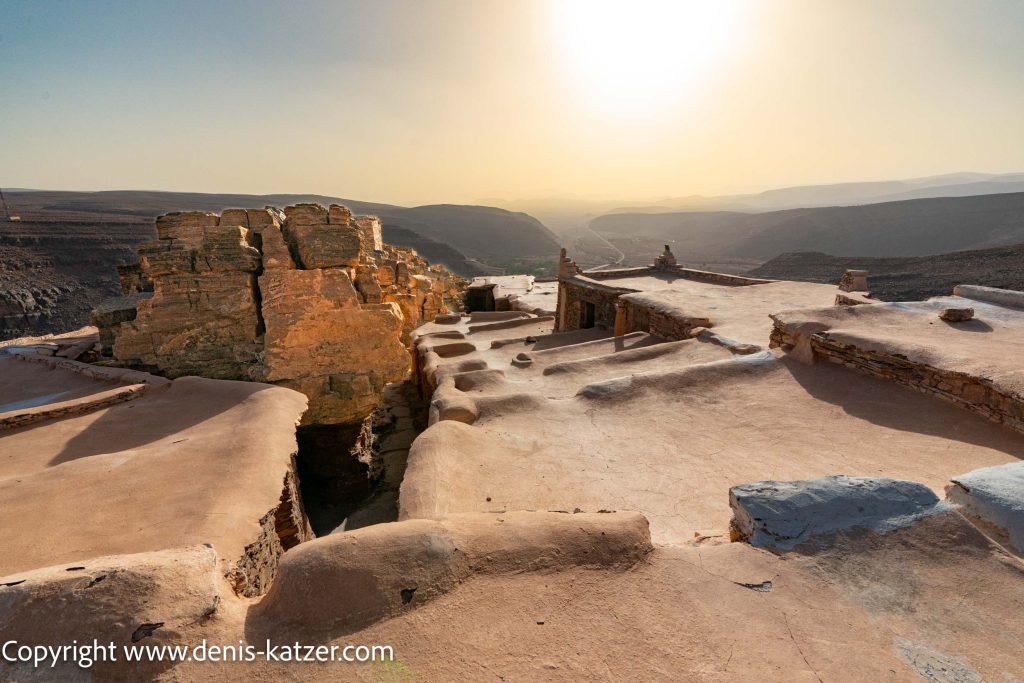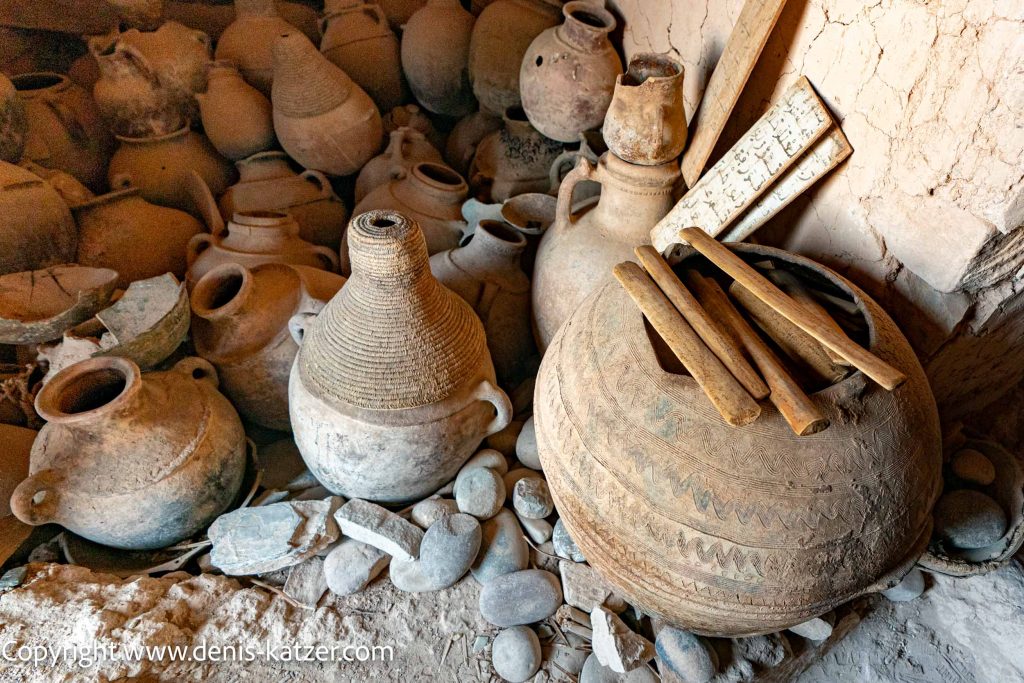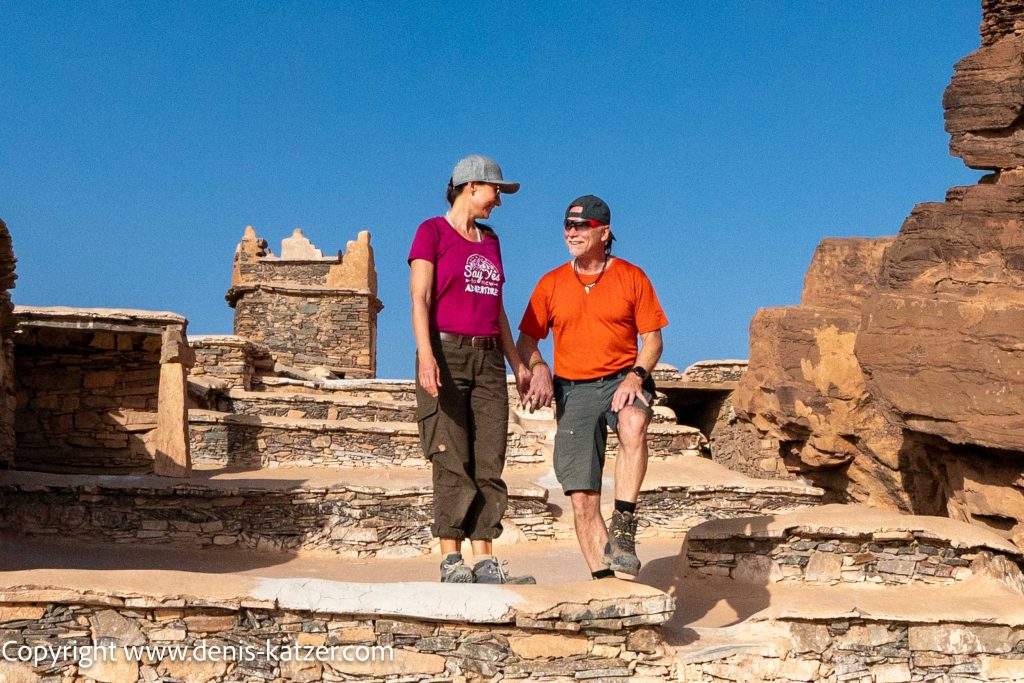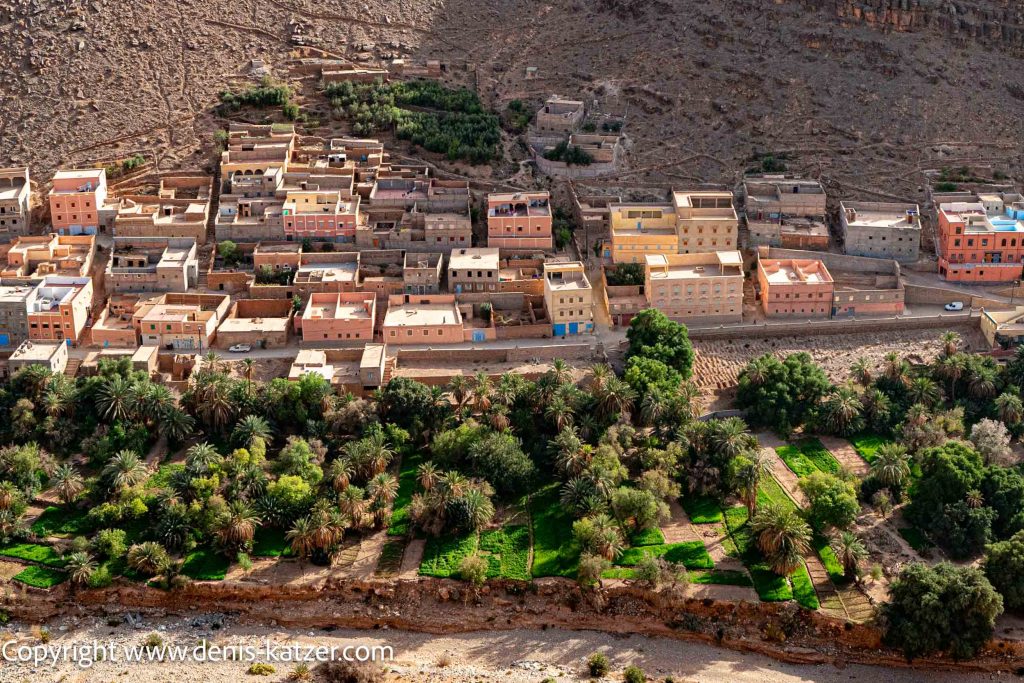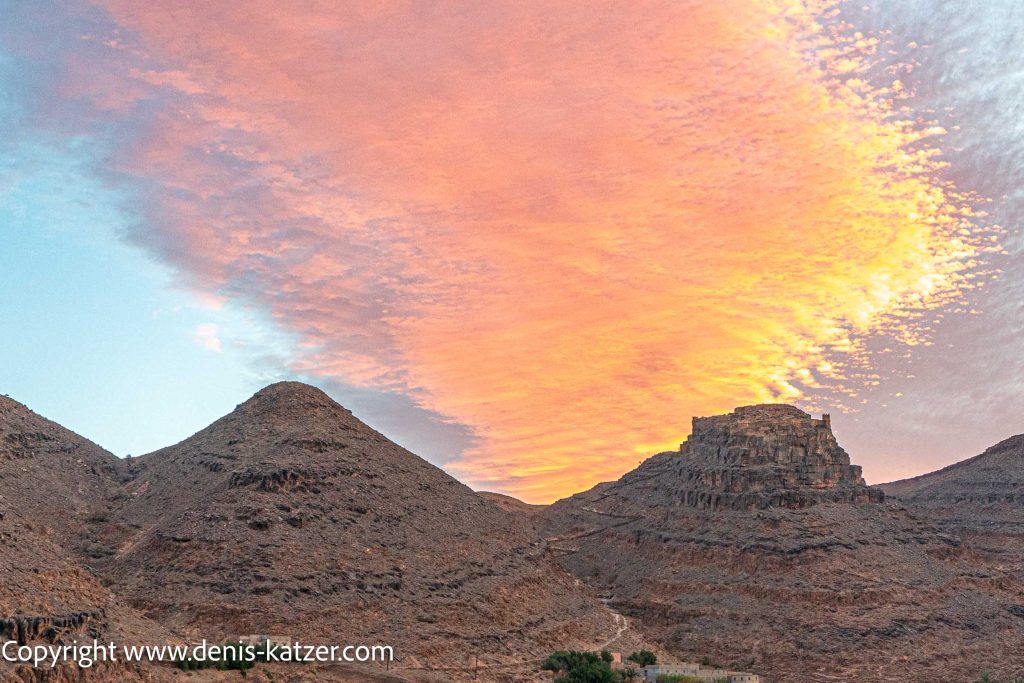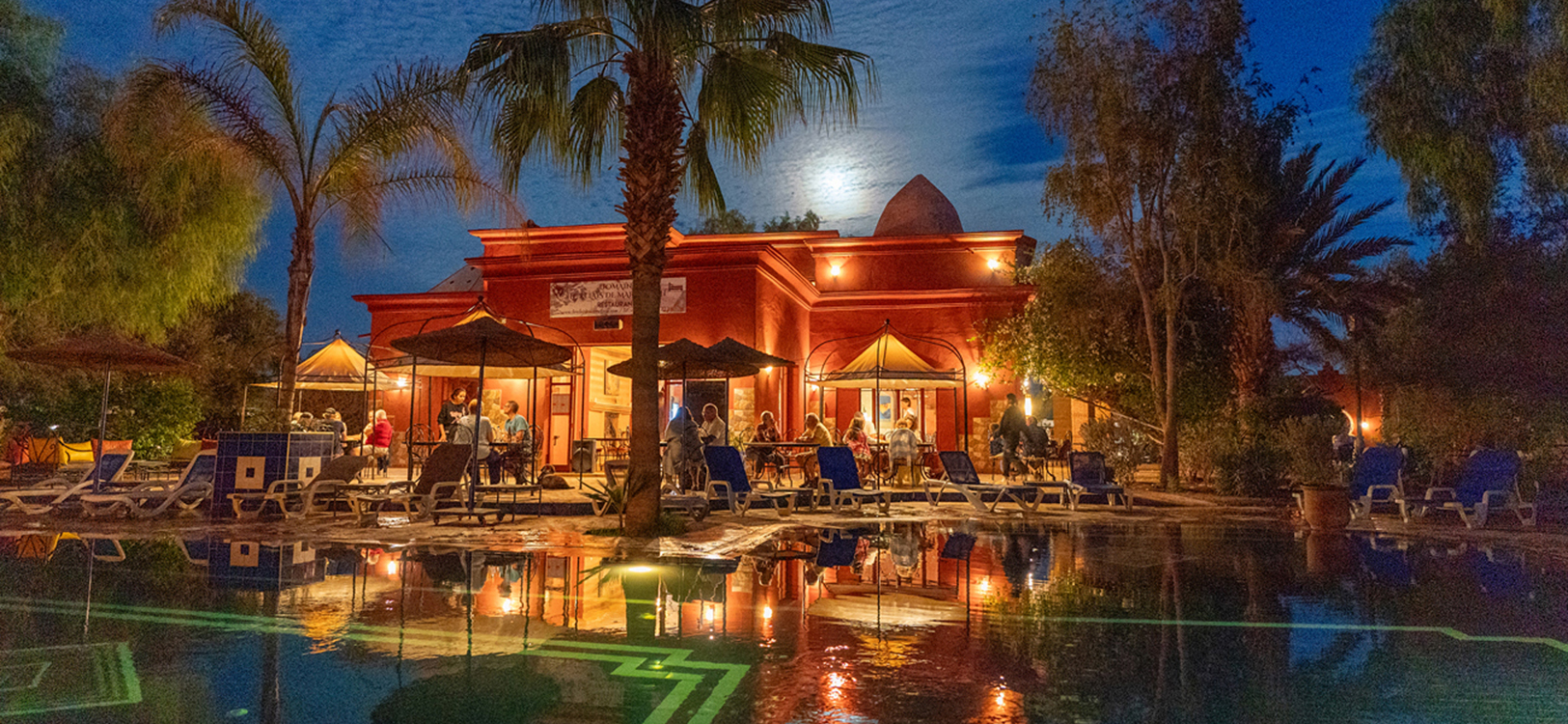
Agadir Id Aissa – On the trail of the Berber clans
N 29°14'35.5" W 009°11'31.3"
Day: 20.02.2024
Day: 445
Camp 81
Country: Morocco
Location: Amtoudj village
Latitude N: 29°14’35.5″
Longitude W: 009°11’31.3″
Total kilometers: 12,020 km
Altitude: 726 meters
Temperature day max: 22°
Night temperature: 10 °
The landscape has been hidden behind a veil of sand for the last few days, but today the time has finally come: we set off for the Id Aissa storage castle, also known as Agadir Id Aissa. This historical monument, deeply rooted in the culture and history of the Berber tribes, has been on our bucket list for this trip to Morocco from the very beginning. Having already explored large parts of the north and south of the country, we finally reach this special place.
“Krrrriiieeeetsch”, the aged and heavy wooden door to the granary castle opens. A wrinkled face, tanned by the sun and Sahara wind, emerges. The castle guard’s old, clouded eyes blink at us intently. The man belongs to a Berber clan and grants us entry after we have paid him the entrance fee. We enter a dark, rather narrow corridor. It takes a while for our eyes to adjust to the dim surroundings. “You are here,” croaks the man’s voice as he points to an information board with a stick and explains to us in French that the granary castle is jointly owned by his clan, whose members live in the surrounding villages in the valley. “There are also castles like this in southern Tunisia and western Libya. There they are called Ksur and look different to ours here in Morocco,” we think we understand from his hoarse words.
As soon as we leave the outer fortification wall behind us, we notice old mint teapots placed in front of one of the storage chambers. “We used these to serve our green tea, which British traders brought to Morocco in the 18th century and which is now our national drink,” he says with undisguised pride in his voice.
“And here,” he continues, “we milled black powder for the first firearms introduced by Europeans from the 16th century onwards.” I wonder if his explanation is to be taken seriously, as we know that black powder was typically produced in special mills outside inhabited areas because the manufacturing process was extremely dangerous. “The powder was probably ground at a safe distance and then kept here in well-ventilated storage rooms,” I say to Tanja in German, contradicting the castle guard.
We delve deeper into the history of the castle and learn that the Berbers, as a farming culture, had to develop techniques to protect their laboriously produced food from robbery and the forces of nature. The thick chambers made of robust clay or stone regulated the temperature and kept the inside dry. Ventilation openings ensured a draught and prevented the dangerous growth of mold.
“While we used to roam the mountain regions as semi-nomads with our herds of sheep and goats, a team of guards selected by us protected this storage castle around the clock. They made sure that the important chambers in which our harvest and all our valuables were stored were safe from attack even when the clan members were away,” he reports.
The storage castles were not only storage sites, but also central places for decision-making within the community. They reflect both the technical sophistication and the social structure of the Berbers. As we stroll through the old walls, we discover cisterns that provided vital water. These cisterns, built from local materials such as stone and clay, were cleaned regularly to ensure the water quality. They not only served as a water supply, but also as social meeting places where the castle’s inhabitants cultivated their community.
On our previous trips, we have always felt drawn to old cultural sites and historic buildings. It is a special pleasure for us to walk through the venerable walls of bygone eras and immerse ourselves in history. As we walk through the rooms of this castle, we imagine the people who once lived here – their conversations, their laughter, their love. In our imagination, the old walls come to life and we can almost hear the echo of their voices.
The ornate details of the architecture and the mysterious shadows of the historic rooms tell us stories of heroism and dedication, of innovation and tradition. It is as if the walls preserve the memories of days long past and give us a deep insight into the lives and souls of the people who once lived in these historic sites.
By exploring these fascinating places, we not only feel the breath of history, but also feel deeply connected to humanity. It is a special kind of awe and wonder that keeps us exploring and appreciating the everlasting beauty and richness of times gone by.
Here is the link to the video:

